BOOKS
FROM THE NORTHERN PLAINS

Publications by the Center for Western Studies are made possible with the support of the National Endowment for the Humanities



Publications by the Center for Western Studies are made possible with the support of the National Endowment for the Humanities

Rhodes Professor of History at the University of Oxford Pekka Hämäläinen leads off this collection of new perspectives on South Dakota history with a stunning interpretation of Lakota power in the Northern Plains. With their mastery of the horse, the Lakota mounted “an expansive and constantly shapeshifting Indigenous regime that controlled human fates in the North American interior for generations,” writes Hämäläinen.
COMING IN 2023
The essays that follow take up a variety of topics on South Dakota history:



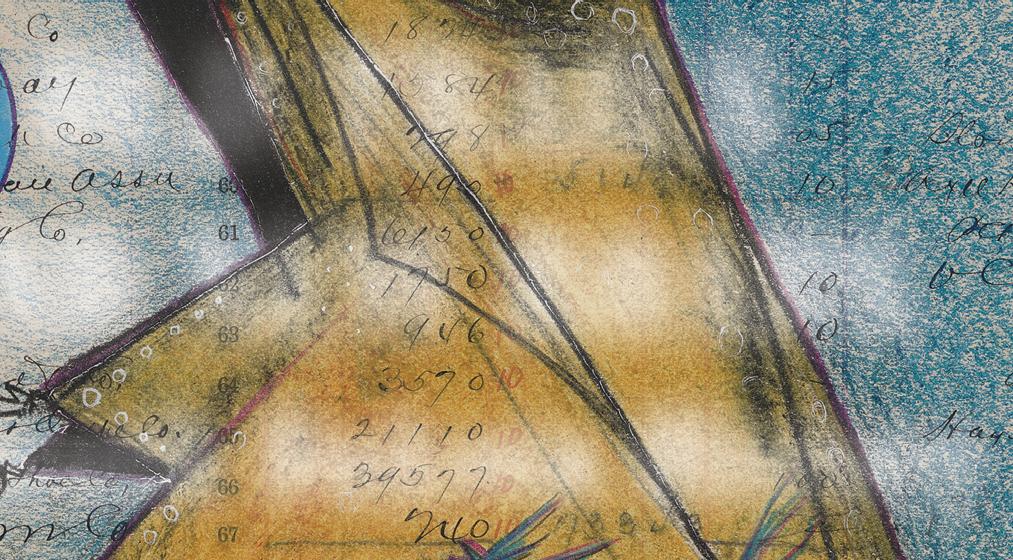

• Borders, by Thomas D. Isern


• Railroads, by H. Roger Grant
• Weather, by Christopher R. Laingen
• West River Country, by John Henris
• Wildlife and Parks, by Frank Van Nuys
• Radical Tradition, by Jeffrey A. Johnson
• German-Language Press, by Samantha M. Litty
• Changing Foodways, by Sara Egge


• Sports, by Paul Higbee
• Hunting and Fishing, by Lance Nixon
• American Indian Movement, by Carson Walker

• Movies, by Jon D. Schaff
The collection is edited by Jon K. Lauck, whose most recent book is The Good Country: A History of the American Midwest, 1800-1900 (University of Oklahoma Press). Publication of Old Trails and New Roads in South Dakota History was made possible, in part, by a major gift from Jan Hovey Johnson and Reliabank.
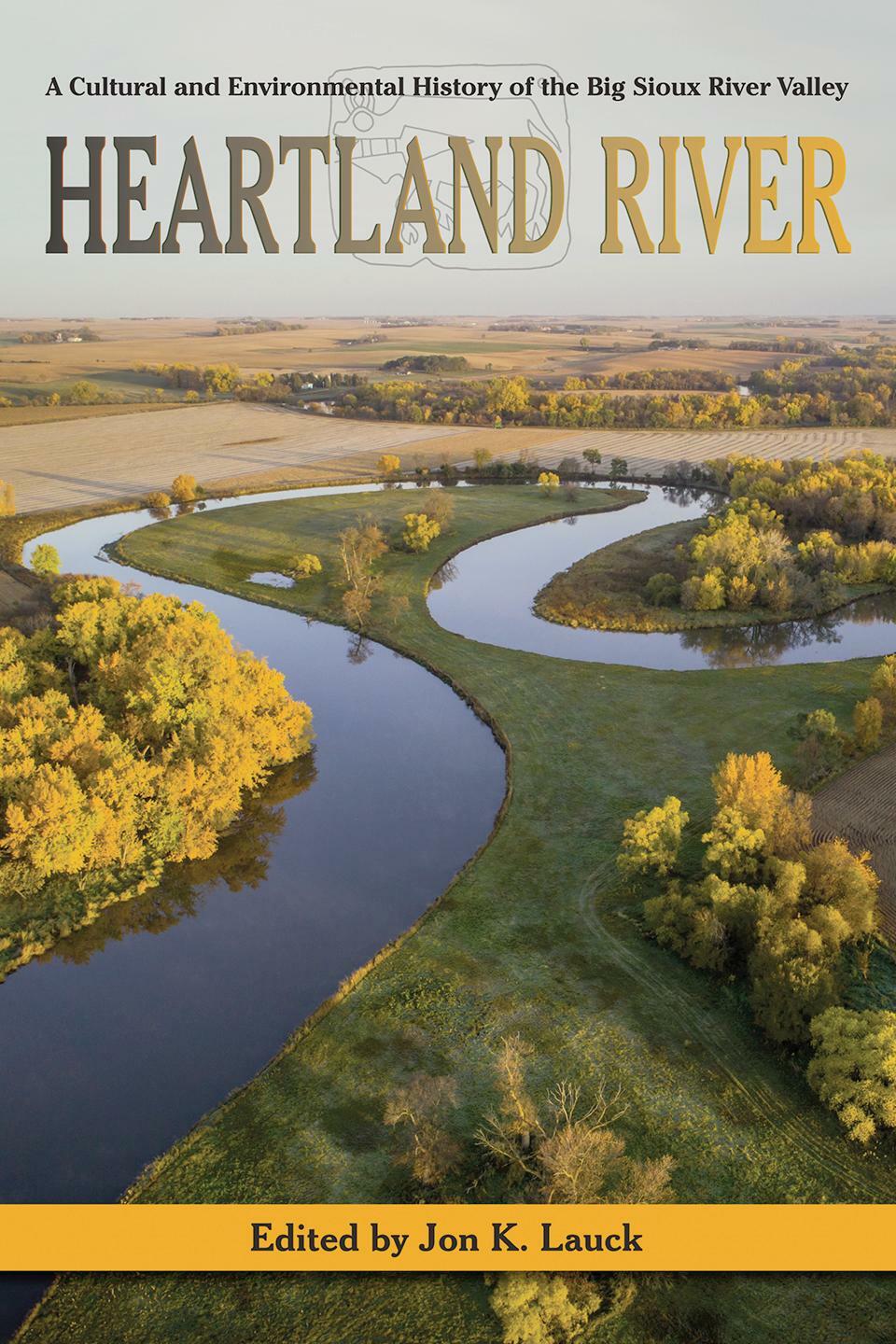
 EDITED BY JON K. LAUCK, UNIVERSITY OF SOUTH DAKOTA
EDITED BY JON K. LAUCK, UNIVERSITY OF SOUTH DAKOTA
Introduction: “A man should have a picture of his river in his head, all of it”: Finding the Big Sioux River Valley Jon K. Lauck, University of South Dakota
“A River through Time: Early Cultures on the Big Sioux River,” Renee M. Boen and Katie Lamie, South Dakota State Historical Society
“From Pipes to Pistoles: Blood Run, the Pipestone Trade, and the Eclipse of the Pre-Contact Economy in the Upper Midwest,” Joshua Jeffers, California State University-Dominguez Hills
“Land Use, Forests, and Birds of the Big Sioux River Valley,” Matthew J. Ley, Colorado State University, David L. Swanson, University of South Dakota, W. Carter Johnson, South Dakota State University, and Mark D. Dixon, University of South Dakota
“Geography and Land Use in the Valley,” Chris Laingen, Eastern Illinois University
“‘A stream of clear, swift-running water’: Nicollet, Fremont, and the Exploration of the Big Sioux River in 1838,” John Bicknell
“The Big Sioux River Valley Frontier, 1851-1889,” by Jeff Bremer, Iowa State University
“From Northfield to Springfield: The Escape of the James Brothers from History into Legend along the Big Sioux River,” Sam Herley, University of South Dakota
“Plein Art and the Big Sioux River,” Christopher Vondracek, Forum News Service
“The Origins of Frederick Manfred’s ‘Siouxland,’” Lance Nixon
“The Politics of the Valley,” Matthew Housiaux, Kiplinger
“Lorena King Fairbank and John King Fairbank: South Dakotan Cosmopolitans,” Greg Rohlf, University of the Pacific
“Unheralded Novelists of Siouxland,” Paul Theobald, Wayne State College
“Abbie Gardner, the Spirit Lake Massacre, and Reconciliation on the Big Sioux River,” Jim Schaap, Dordt College
“The Big Sioux River Watershed: Changing Perceptions of River Health and the Role of State Soil and Water Conservation Districts in Twentieth-Century South Dakota,” Dale Potts, South Dakota State University
“The Big Sioux River and Water Quality,” Kelsey Murray, Western Dakota Tech, and Linda DeVeaux, New Mexico Institute of Mining and Technology
“The Western Watershed: Lake County and Its Water,” Jon Hunter, Madison Daily Leader
“Life, Loss, and the Literature of Loess,” Ryan Allen, Briar Cliff University
“‘Follow Me,’ said the River,” David Evans, South Dakota State University
Wayne Fanebust has a penchant for writing about the dark side of history and is an ardent advocate for the underdog. A former California attorney, he now lives in South Dakota. His recent titles include “Chasing Frank and Jesse James: The Bungled Northfield Bank Robbery and the Long Manhunt” (McFarland); “Outlaw Dakota: The Murderous Times and Criminal Trials of Frontier Judge Peter C. Shannon” (Center for Western Studies); and “Brigadier General Robert L. McCook and Colonel Daniel McCook, Jr.: A Union Army Dual Biography” (McFarland).
No Justice for Agnes: The Strange Death of Agnes Polreis and the Sensational South Dakota Murder Trials of Emma Kaufmann is the latest volume in the Center for Western Studies Prairie Plains Series. Other recent volumes in the series include Outlaw Dakota: The Murderous Times and Criminal Trials of Frontier Judge Peter C. Shannon and Little Business on the Prairie: Entrepreneurship, Prosperity, and Challenge in South Dakota.

ISBN: 978-0-931170-91-1 288 pages, illustrated, index Price: $15.00

For three years, beginning in 1906, the mysterious death of servant girl Agnes Polreis in Sioux Falls, SD, followed by the trials of Emma Kaufmann, gripped the nation’s attention. Lurid reports of abuse and even torture in the heartland appeared with regularity in newspapers from San Francisco to Washington, D.C.
“I challenge all the pages of literature to show me so sad a case and so awful a case,” roared prosecuting attorney George W. Egan in his closing argument in 1907.
After less than six months in the employ of Emma Kaufmann and her husband, a wealthy and influential partner in a brewery business in the region’s largest city, sixteen-year-old Agnes Polreis, born in Austria-Hungary, was returned to her parents’ farm, dead, her emaciated body showing marks of extreme violence—49 wounds in all, some of them gangrenous. An instance of “diabolical cruelty,” editorialized one newspaper.
But more repulsive than the manner of Agnes’ death were the outrageous antics of the attorneys, the shifting testimony of witnesses, and the sensationalizing newspaper coverage. A poor immigrant girl with faltering English, Agnes was abandoned by physicians and exploited by the legal and newspaper professions. Her death and the subsequent trials caused the downfall of a United States senator, but brought no justice for Agnes Polreis.


It took over fifty years to make the Center for Western Studies the cultural powerhouse it is today. “Bright, Clear Sky Over a Plain So Wide” is the story of how one of America’s first regional studies centers, located in the borderlands between the Midwest and Great Plains/West, grew into a distinctive humanities, arts, and public affairs program at Augustana University.
The book traces three themes (mission, governance, and finance) throughout the center’s 56-year history and examines the development of an idea to preserve and interpret the history and cultures of the region surrounding the university, while also seeking to improve the quality of the area’s social and cultural life.
Launched in 1964 by English professor and historical novelist Herbert Krause, the center was expanded in 1970 by the Augustana board of trustees and has since been sustained by a community-university board and council.
Today, the Center for Western Studies looks forward to a future that, in the words of O.E. Rolvaag, an Augustana Academy graduate and author of the Great Plains novel Giants in the Earth, holds the promise of a “bright, clear sky over a plain so wide.”
Included are recollections by founders Herbert Krause, Gary D. Olson, and Sven G. Froiland, a reminiscence of Herbert Krause by former student Jane Torness Rasmussen, remarks on the Center’s 25th anniversary by Arthur R. Huseboe, and the dedication of the Fantle Building by Tom Kilian. An account of the work of early co-director William R. “Bill” Wyatt is included in Thompson’s narrative.
Harry F. Thompson is Executive Director of the Center for Western Studies.
Cover image by Iowa watercolorist Judy Thompson.
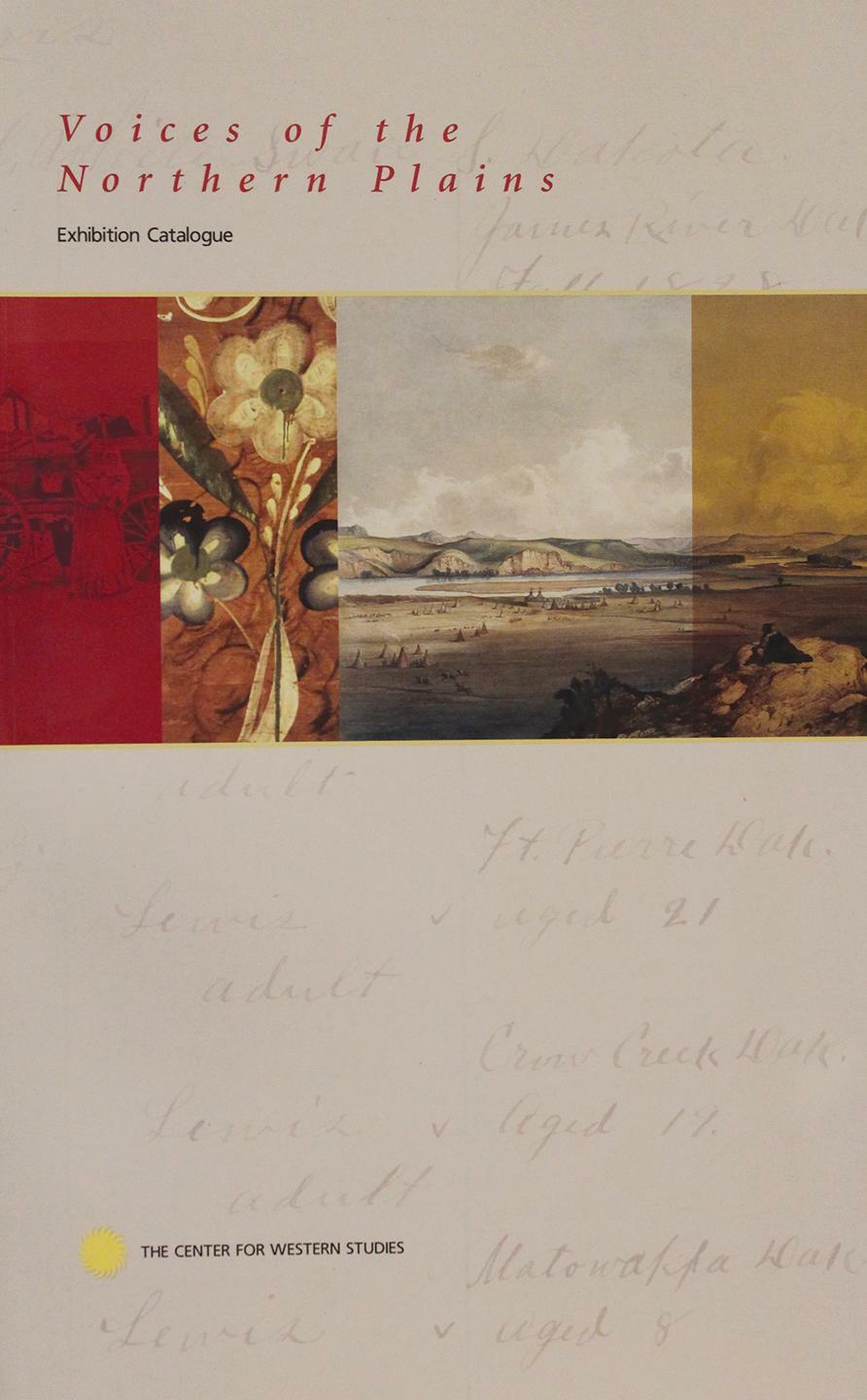 EDITED BY HARRY F. THOMPSON, EXECUTIVE DIRECTOR THE CENTER FOR WESTERN STUDIES
EDITED BY HARRY F. THOMPSON, EXECUTIVE DIRECTOR THE CENTER FOR WESTERN STUDIES
An educational supplement to the Voices of the Northern Plains exhibition, exploring further its emphasis on the historical ethnic diversity of the region and its purpose in pointing to the rich resources found in the archives and other collections at the Center for Western Studies, which are available for study and research.
Through Voices of the Northern Plains, a dramatic re-envisioning of the core museum exhibits in the Center for Western Studies, visitors travel across 300 years of life in the Northern Plains (1700-2000) . . . from the Oneota village at Blood Run near the Big Sioux River to the Corps of Discovery’s encounter with the Sioux along the Missouri River . . . from the Dakota and Lakota adaptation of Euro-American technology during Plains Indian dominance to resistance by Red Cloud and Crazy Horse during the Plains Indian Wars . . . from the arrival of early missionaries and the coming of homesteaders to the imaginative re-creation of the frontier era in the novels of Cather, Rölvaag, Krause, and Manfred . . . from the persistence of indigenous cultures to the enduring immigrant values seen in Euro-American folk art and the commitment to education by the Boe family in establishing the Boe Forum on Public Affairs.
Visit this exhibit and the art galleries of Center for Western Studies in Sioux Falls!
ISBN: 978-0-931170-88-1 70 pages • richly illustrated in color FREE
“Two chapters stand out in offering significantly different approaches to the study of these regions. Gleaves Whitney argues that a “real” borderland formed when the Spanish, French, and Anglo-Americans began marrying, trading with, and living with the diverse tribes in the regions and created a cultural borderland that formed a ‘cultural core’ in its own right. These cultural estuaries existed for a few generations and were squeezed out by the grip of an American empire. The contributors here provide a rich array of ideas regarding the borderlands between the Midwest and Great Plains. The more we understand these borderlands, the greater our appreciation will be of the forces that shaped them and us.”
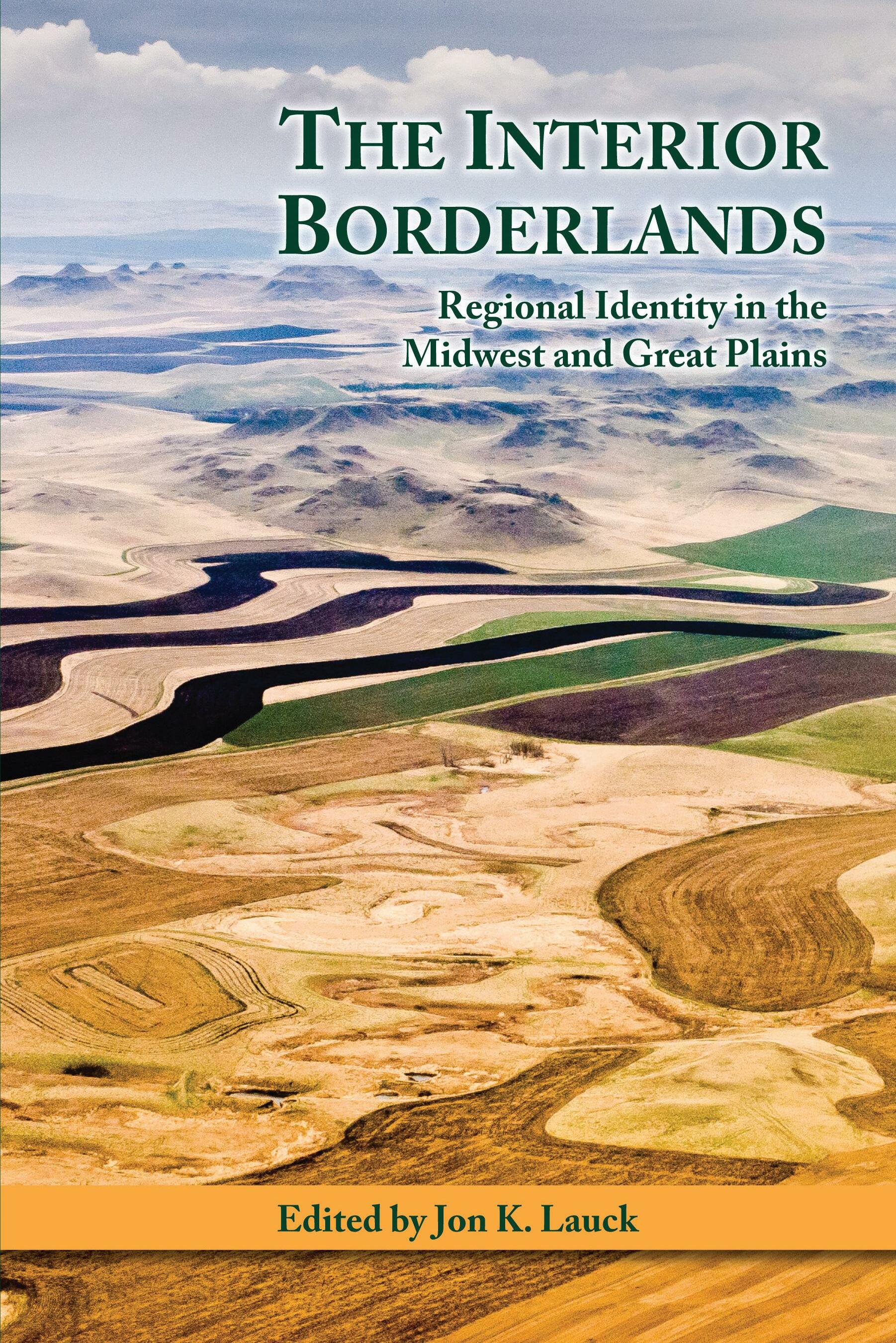
—Ramon Powers, Kansas History (Summer 2020)
“This is a special book. Its uniqueness is in part due to the questions asked: Where does the northern Great Plains end and the upper Midwest begin? In essence, is there a case to build for “interior borderlands,” the title of the volume? Twenty-two regional experts have taken on this challenge, and the result is a book that rivals any and all other North American regional writings. Don’t miss it!”
– John R. Wunder, University of Nebraska-Lincoln
ISBN: 978-0-931170-12-6 379 pages, including preface and introduction Price: $15.00

Preface - West from Here - Harry F. Thompson, Center for Western Studies, Augustana University
Introduction - Crossing the Center Line: In Search of the Midwest/Great Plains Borderlands - Jon K. Lauck, University of South Dakota
Geographies of the Borderlands - Christopher R. Laingen, Eastern Illinois University
Aerial Transect of the Central Great Plains/Midwest Borderlands - James S. Aber and Susan W. Aber, Emporia State University, Kansas
Of Space, Time, Size, Hexagons, Movement, and Memory: A Comparison of County Development in Illinois and South Dakota - James E. Davis, Illinois College
The “There” in “There Is No There There” - Gleaves Whitney, Hauenstein Center, Grand Valley State University
“Nebraska is, at least, not a desert”: Land Sales, False Promises, and Real Estate Borderlands on the Great Plains - Matthew S. Luckett, California State University, Dominguez Hills
“The Western Coteaux!”: Hamlin Garland’s Experience of the Midwest/Great Plains Borderlands - Lance Nixon, Pierre, South Dakota
Claiming the Frontier’s River: Regional Divides and the Failure of the Missouri Valley Authority, 1934-1954 - Maria Howe, Iowa State University
Defined By Absence: Where the West Begins - Will Weaver, Bemidji, Minnesota
Exploring the Midwest/Great Plains Borderlands in Modern Women’s Memoir Rachael Hanel, Minnesota State University, Mankato
Home on the Range: How Community Cookbooks Define the Middle Border Debbie A. Hanson, Augustana University
The Great Plains Vision: Horizontal Grandeur - David Pichaske, Southwest Minnesota State University
Finding the Sub-regional Diversity in the American West: Historians and Their Search for the American Interior Borderlands Nathalie Massip, Université Côte d’Azur
Cinematic Representations of “Flyover Country” in Modern America Anna Thompson Hajdik, University of Wisconsin-Whitewater
West of the 100th Meridian: Where the Midwest Ends and the Great Plains Begins - Brad Tennant, Presentation College
Hiawatha and Leatherstocking: From Native Borderlands to Regional Border Joseph D. Schiller, University of Oklahoma
Exploring Midwestern v. Great Plains Regional Variation by Way of the Jewish Immigrant Experience - Mara W. Cohen Ioannides, Missouri State University
Where the Midwest Meets the Bible Belt: Using Religion to Explore the Midwest’s Southwestern Edge - Jay M. Price, Wichita State University
Beyond Aridity: Historical Environment and Shifting Regional Boundaries Julie Courtwright, Iowa State University
Geography Is Not Destiny: Human Agency in the Midwest/Great Plains Transition Zone - Paula M. Nelson, University of Wisconsin-Platteville
Where the Midwest Ends and the Great Plains Begins: A Survey Michael J. Mullin, Augustana University


In 1891, surveyor Charles H. Bates embarked on a special mission. Selected and financed by the U.S. Government, Bates and his crew faced the daunting task of surveying and marking the frontier boundary between the two recently formed Dakotas with seven-foot, 800-pound stone monuments placed every half-mile along the 360-mile border. No other state boundary is so marked!


Conservation on the Northern Plains: New Perspectives challenges widespread assumptions about people and nature, reframing understandings of both in the process. In eleven essays, ten authors trek across the Plains to find the people, places, and stories that define conservation.
In addressing conservation’s reach, the authors reflect on the ordinary, the extraordinary, and the spaces in between, covering species ranging from horses to honeybees and from pheasants to wolves. Each essay is a call to revisit conservation and re-engage in discussions of use and the environment. This collection tackles conservation issues in eight states and Canada, giving special attention to Colorado, Iowa, Kansas, Minnesota, Montana, North Dakota, South Dakota, and Wyoming.
“. . . the essayists in this volume will help readers understand the vitality and potential of one of North America’s most distinctive and productive landscapes.”
Greg Breining, author of Wild Shore and Paddle North
The Center for Western Studies is the publisher of books of enduring worth about the history, literature, art, public affairs, and diverse cultures of the Northern Plains.

All CWS publications are available in the Center's gift shop, which also features books by regional authors and original Native American jewelry.
— BY ROBERT E. WRIGHT
BY ROBERT E. WRIGHT
Robert E. Wright is the Nef Family Chair of Political Economy at Augustana University where he has taught courses in business, economics, government, and history since 2009. He is the co-author or co-editor of over 20 books, including Corporation Nation (2014), Guide to U.S. Economic Policy (2014), Genealogy of American Finance (2015), and The Poverty of Slavery: How Unfree Labor Pollutes the Economy (2017). Dr. Wright has taught at Temple University, the University of Virginia, and New York University's Stern School of Business.

“Wright has written a timely and well-researched book, in which he showcases how entrepreneurship has created economic growth and development in the highly resourceful, economically vibrant, and strikingly beautiful Mount Rushmore State.”
— Joseph M. Santos, South Dakota State University, EH.Net (Economic History Association). Used by permission.
In his new study of entrepreneurship in South Dakota, Little Business on the Prairie, economic historian Robert Wright reviews the state’s economic history through the lenses of its public policies, politics, and institutions of governance. The book demonstrates that an economy that suffers from palpable disadvantages, like long distance from major markets and low population density, will still thrive if it is governed efficiently. In other words, crucial public goods like education, infrastructure, and justice should be provided at minimal cost, and entrepreneurs should not be burdened with excessive regulatory and tax expense.
Economic performance suffers when governance is poor and public goods are provided at an unnecessarily high cost. This Wright shows by comparing South Dakota to other states and by examining the economies of the state's Indian reservations. Public goods provision on reservations is spotty and generally very poor and, not surprising, reservation economies lag far behind that of the state even though individual Native Americans have shown considerable entrepreneurial skill. Little Business on the Prairie concludes with Wright’s prescription for confronting the economic and governance challenges that lie ahead for South Dakota.
“. . . an enjoyable and useful book that a variety of readers should find a worthwhile addition to their personal book collection or class reading list.”
— Ric A. Dias, South Dakota History Used by permission.

AUTHOR:
Harold H. Schuler was the author of several books on South Dakota, including two previous fort histories, Fort Pierre Chouteau and Fort Sully: Guns at Sunset. A former assistant to United States Senator Francis Case and a retired Pierre, South Dakota, businessman, he was vice president of the Board of Trustees of the South Dakota State Historical Society.

Harold H. Schuler’s Fort Sisseton is the only comprehensive history of the military fort that was established in Dakota Territory in 1864 along the main travel route of the Dakota Sioux. Responding initially to the Dakota War of 1862, the War Department operated Fort Sisseton until its disbandment in 1889.
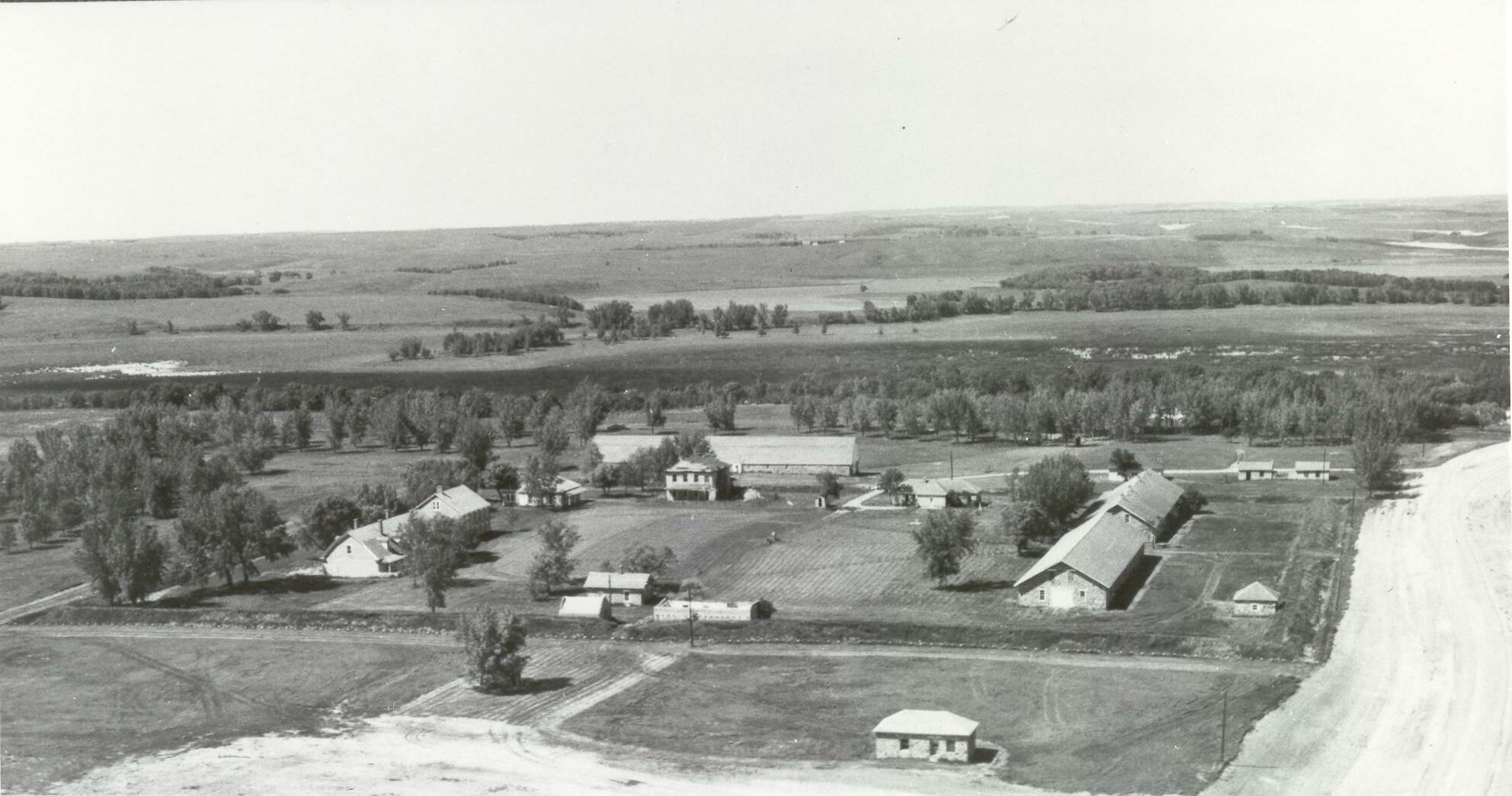
Extensively researched at the National Archives and South Dakota State Archives, Fort Sisseton recounts the military history of the post, including the activities of the Frontier Indian Scout Force and the midnight ride of Samuel J. Brown in 1866 to warn of an impending attack.
Originally called Fort Wadsworth, the fort has also served as a ranch, hunting lodge, and gunnery range. Today, restored to its Dakota Territory origins, Fort Sisseton State Park is the site of the annual Fort Sisseton Historical Festival.
Besides telling in detail the story of the fort and the life of its officers and men, Schuler’s book brings together a rich horde of more than sixty photographs, maps, and drawings, including such illustrations as a map of Fort Sisseton roads and Indian mounds (1864), examples of Indian agent and military correspondence, and photographs of tribal people, fort officers and men, and interior and exterior views of many of the buildings at the fort.

 BY SVEN G. FROILAND,
by Ronald
BY SVEN G. FROILAND,
by Ronald
“The Black Hills of South Dakota is a forested island in the grassland ocean of the Great Plains. This region is unique from its geology to the distinctive ecosystems within its border. Froiland's book does a superb job of introducing a student of natural history to the Black Hills. . . . Of particular interest is his writings about the Sioux. . . . The biological information section includes the most comprehensive material in the book."
ISBN: 978-0931170-87-4




252 pages Price: $8.00
Birding in the Northern Plains: The Ornithological Writings of Herbert Krause chronicles the high adventures of one of America's most dedicated bird watchers and environmentalists.

Writer-in-Residence at Augustana University, Herbert Krause was the author of the novels Wind Without Rain and The Thresher. He was the founder of the South Dakota Ornithologists’ Union and a founding director of the Center for Western Studies.
What Herbert Krause brings to telling the stories of the birds of the Great Plains is his love of the rich variety of wildlife here - especially its sheer profusion - and his novelist's ability to give every individual bird he visits its own character and personality.
Impressions of Tribal Life compiles photographs, now at CWS, taken by Father Ambrose Mattingly, OSB, who came to the Crow Creek Reservation in South Dakota in August 1888 as a priest with Immaculate Conception Indian Mission at Stephan. The photo book features digital scans of glass plate images that have been enhanced by combining them with Native American artifacts to add color and texture.
A limited-edition book from Kodak 50 pages Price: $20.00



Herbert Krause was a poet, novelist, essayist, ornithologist, and environmentalist of the Northern Plains. Born in Minnesota, the setting of his three novels—Wind Without Rain (1939), The Thresher (1946), and The Oxcart Trail (1954)—he moved west over the course of his career. Both in his writing and teaching, he extolled “the vastness and the richness of the land, the leveling of democracy, the freedom of action and the independence of the spirit.”
For Johnny Black, the young man we meet in Herbert Krause’s classic Minnesota farm novel The Thresher, his dream of becoming a member of a steam-powered threshing crew has come true. As fireman, he builds the fire that generates the steam and blows the whistle to wake up the rest of the crew. But, as writer Patrick Hicks explains in his introduction, commissioned especially for this edition, Johnny’s ambitions far exceed mastering this new technology, and what he is willing to sacrifice to achieve them is the driving force of the novel.
OTHER BOOKS IN THE HERBERT KRAUSE PRAIRIE TRILOGY:
Wind Without Rain
ISBN: 0-88498-045-6 • 364 pages Price: $10.00
The Oxcart Trail
ISBN: 0-88498-047-2 • 507 pages Price: $10.00
ISBN: 978-0-931170-89-8 510 pages Price: $10.00
•Historical exhibits Voices of the Northern Plains depict 300 years of life in the Northern Plains.

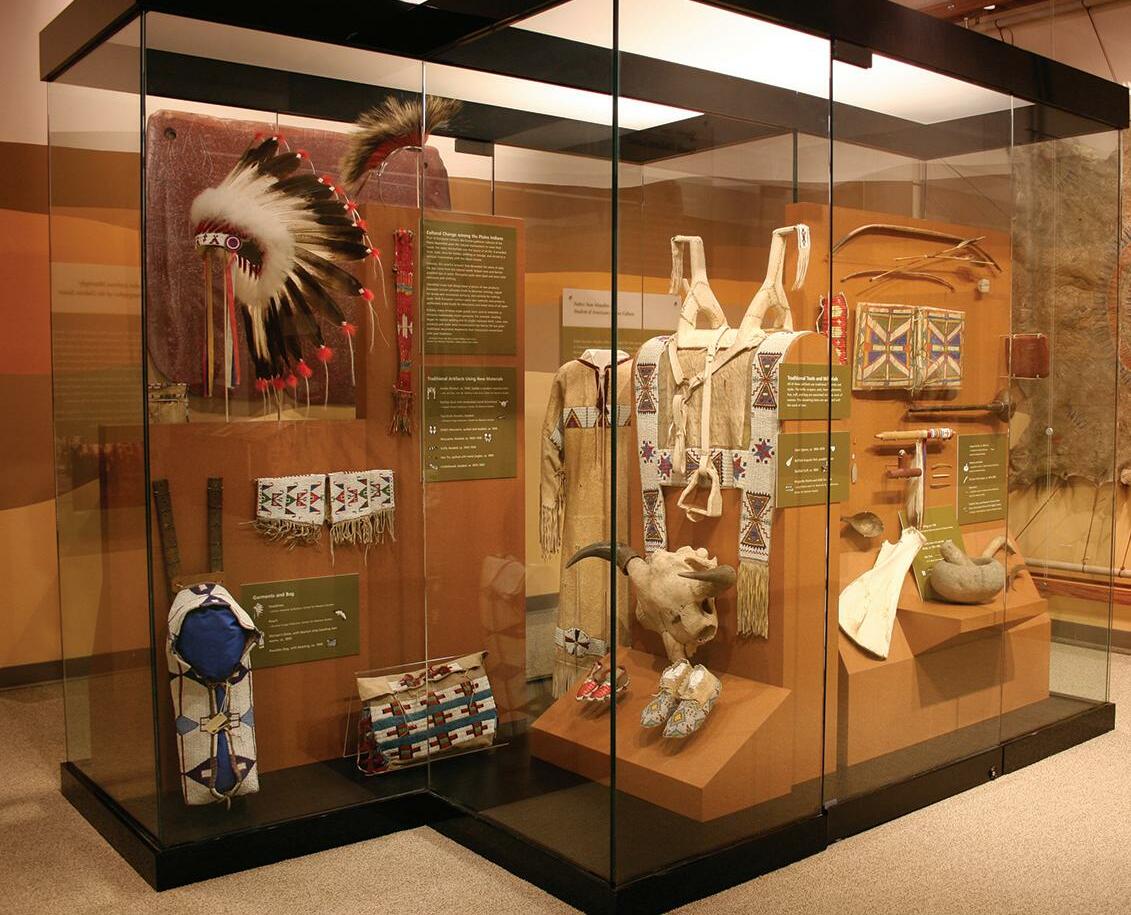
•Rotating art exhibitions in the 10,000-square-foot Madsen/ Nelson/Elmen/Simmons Galleries.
•Selections from the 1,000-piece Fine Art and Ethnographic collections on display.
•Herbert Krause Library of 40,000 books and bound periodicals about the West.
•Northern Great Plains cultures, South Dakota, and Sioux Falls related documents.
•Boe Forum on Public Affairs brings national and international speakers.
•Artists of the Plains Art Show & Sale features 25 top Great Plains artists.
•Dakota Conference focuses on contemporary Northern Plains issues in their historical context.
visit: augie.edu/shop To
2121 S. Summit Ave Sioux Falls, SD 57197
To order by phone: 605.274.4007
To order by fax: 605.274.4999
To order by email: cws@augie.edu
CWS books also distributed by: Amazon.com
Dakota West Books LLC Phone: 605-431-8231
To Ship books to: Name _________________________________________________________________ Address _________________________________________________________________ City _________________________________ State _________ Zip _________ Daytime Phone ______________ Email ________________________________
The Center for Western Studies Augustana University
2001 South Summit Avenue Sioux Falls, SD 57197